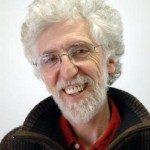Link to Pubmed [PMID] – 25675979
Ann. N. Y. Acad. Sci. 2015 Apr;1341:41-53
Single-stranded DNA (ssDNA) viruses are widespread in the environment and include economically, medically, and ecologically important pathogens. Recently, it has been discovered that ssDNA virus genomes are also prevalent in the chromosomes of their bacterial, archaeal, and eukaryotic hosts. Sequences originating from viruses of the families Parvoviridae, Circoviridae, and Geminiviridae are particularly widespread in the genomes of eukaryotes, where they are often fossilized as endogenous viral elements. ssDNA viruses have evolved diverse mechanisms to invade cellular genomes, and these principally vary between viruses infecting bacteria/archaea and eukaryotes. Filamentous bacteriophages (Inoviridae) use at least three major mechanisms of integration. Some of these phages encode integrases of serine or tyrosine recombinase superfamilies, while others utilize DDE transposases of the IS3, IS30, or IS110/IS492 families, whereas some inoviruses, and possibly certain members of the Microviridae, hijack the host XerCD recombination machinery. By contrast, eukaryotic viruses for integration rely on the endonuclease activity of their rolling-circle replication-initiation proteins, mimicking the mechanisms used by some bacterial transposons. Certain bacterial and eukaryotic ssDNA viruses have embraced a transposon-like means of propagation, with occasionally dramatic effects on host genome evolution. Here, we review the diversity of experimentally verified and hypothetical mechanisms of genome integration employed by ssDNA viruses, and consider the evolutionary implications of these processes, particularly in the emergence of novel virus groups.


